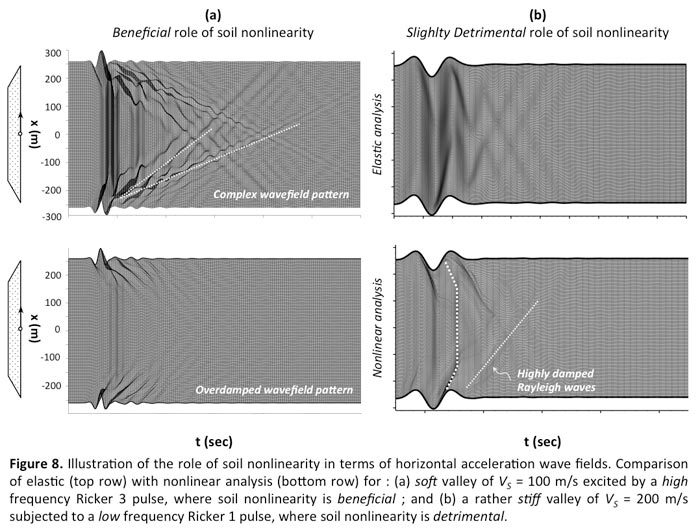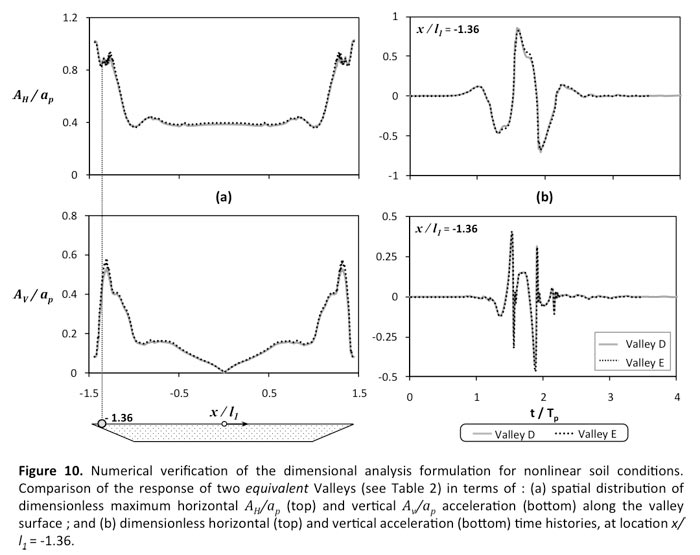Effects of near-fault ground shaking on sliding systems
Ground shaking in the close neighborhood of a rupturing seismic fault may be affected by wave propagation effects known as “forward directivity” and by tectonic deformations producing a permanent ground offset known as “fling step.” The former effect is the outcome of the coherent arrival of seismic waves emitted from a seismogenetic fault when its rupturing propagates toward the site. It manifests itself with a single long-period high amplitude pulse occurring near the beginning of shaking, and oriented perpendicularly to the fault Somerville 2000. The fling step effect is the outcome of the tectonic permanent deformation of the earth in the proximity of the fault. It manifests itself in the record with a static residual displacement, oriented parallel to the fault strike with strike-slip earthquakes and perpendicular to the fault with purely dip-slip normal or thrust earthquakes. The Lab has extensively investigated the effect of such phenomena on sliding systems. Conclusively, what appear elusively as “small details” in the record may turn out to exert a profound influence on sliding ⎯ an influence that far outweighs the effects of peak acceleration, peak velocity, and Arias Intensity. All our results are compiled in both dimensionless and dimensional charts, and compared with the classical charts from the literature. Finally, it is shown that no convincing correlation can be found between accumulated slip and the Arias Intensity of excitation.
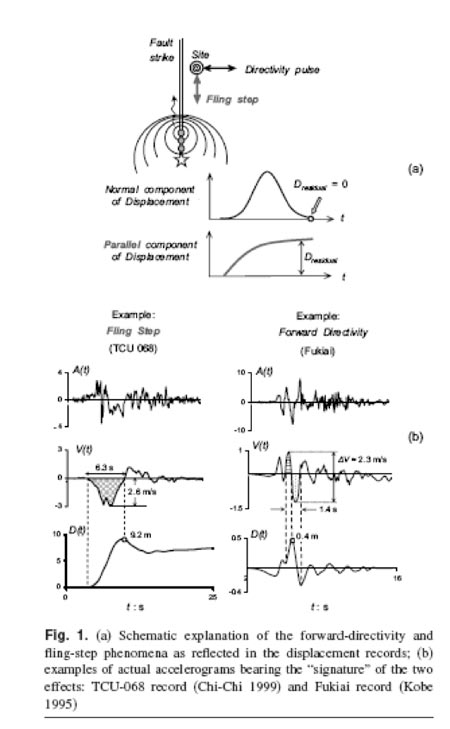
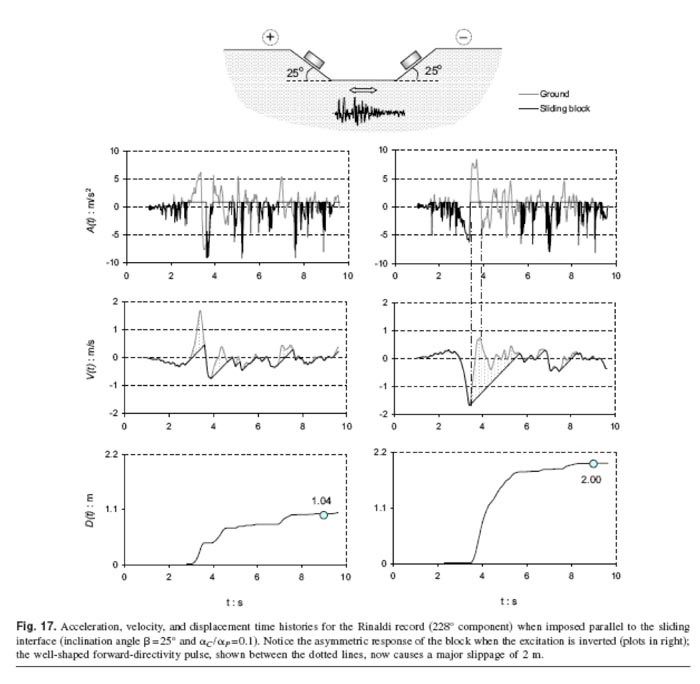
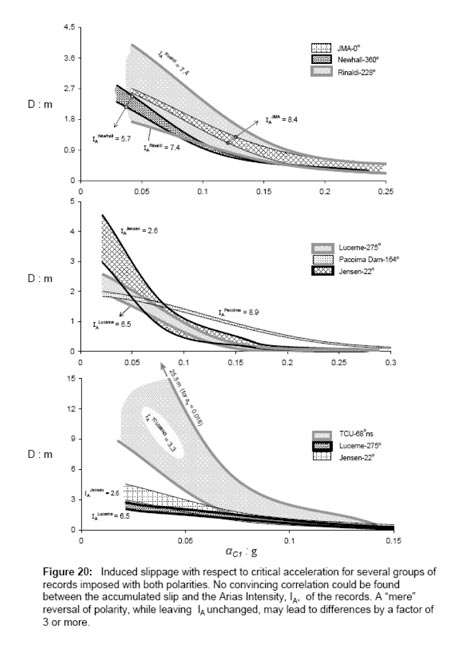
Seismic Wave Propagation in a Very Soft Alluvial Valley : Sensitivity to Ground Motion Details and Soil Nonlinearity, Generation of Parasitic Vertical Component
Though, the surface response of 2D alluvial valley formations has been extensively investigated in the literature, most of the research conducted until now has focused on elastic soil response and idealized input motions. The Lab of Soil Mechanics has dealt extensively with the propagation of SV waves through alluvial valleys, trying to gain further insight on the sensitivity of 2D wave effects to crucial parameters, such as : (a) the frequency content of the input motion, (b) the details of the input motion (duration, number of cycles, frequency content, etc.), and (c) soil nonlinearity.
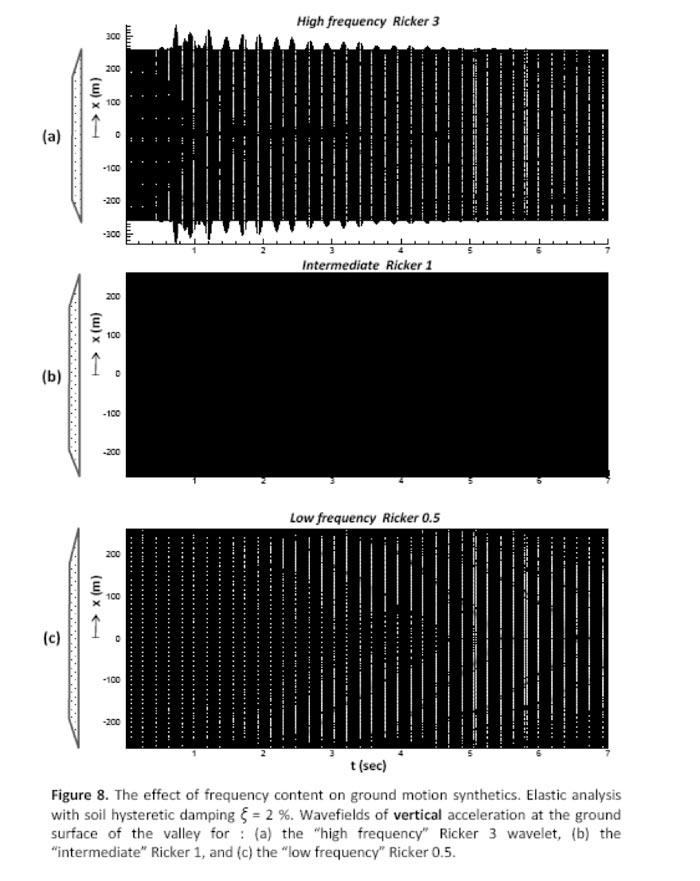
Nonlinear Dimensional Analysis of Trapezoidal Valleys
In order to augment the generalization potential of the work performed in the lab concerning the wave propagation through alluvial valleys, a formal dimensional analysis is performed accounting for fully inelastic soil response and focusing on the sensitivity of 2D dynamic response to geometric and material properties. It is shown that 2D valley response may be described through the following key dimensionless parameters : (i) the valley shape factor s (expressing the slope inclination), (ii) the impedance ratio i (which expresses the stiffness of the soil relative to the bedrock), (iii) the wavelength ratio λs (which is a function of soil stiffness and seismic excitation frequency), (iv) the rigidity ratio v (expressing the stiffness of the soil relative to its strength), and (v) the resistance ratio r (which expresses the degree of soil nonlinearity). The effectiveness of the dimensional formulation is verified through numerical analysis of equivalent valleys, assuming elastic and nonlinear soil response.
